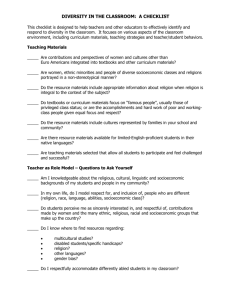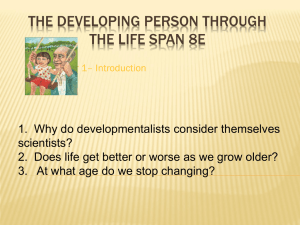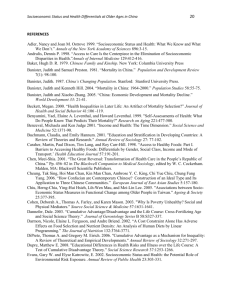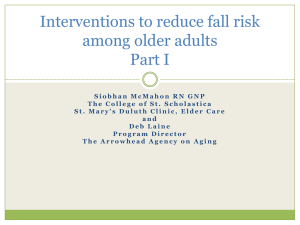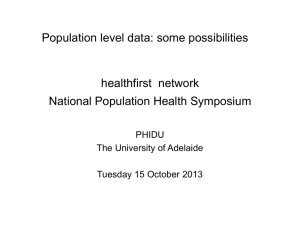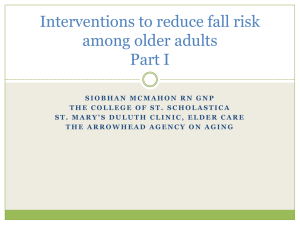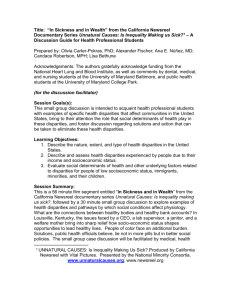Closing the Summer Reading Gap: You Can Make a Difference
advertisement
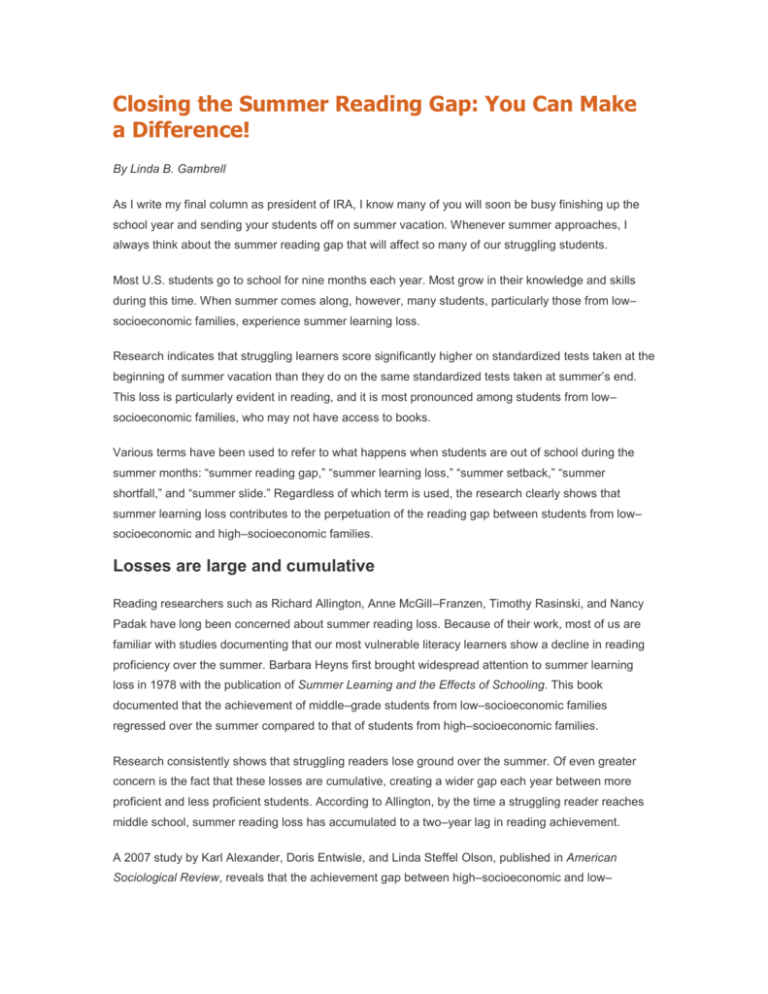
Closing the Summer Reading Gap: You Can Make a Difference! By Linda B. Gambrell As I write my final column as president of IRA, I know many of you will soon be busy finishing up the school year and sending your students off on summer vacation. Whenever summer approaches, I always think about the summer reading gap that will affect so many of our struggling students. Most U.S. students go to school for nine months each year. Most grow in their knowledge and skills during this time. When summer comes along, however, many students, particularly those from low– socioeconomic families, experience summer learning loss. Research indicates that struggling learners score significantly higher on standardized tests taken at the beginning of summer vacation than they do on the same standardized tests taken at summer’s end. This loss is particularly evident in reading, and it is most pronounced among students from low– socioeconomic families, who may not have access to books. Various terms have been used to refer to what happens when students are out of school during the summer months: “summer reading gap,” “summer learning loss,” “summer setback,” “summer shortfall,” and “summer slide.” Regardless of which term is used, the research clearly shows that summer learning loss contributes to the perpetuation of the reading gap between students from low– socioeconomic and high–socioeconomic families. Losses are large and cumulative Reading researchers such as Richard Allington, Anne McGill–Franzen, Timothy Rasinski, and Nancy Padak have long been concerned about summer reading loss. Because of their work, most of us are familiar with studies documenting that our most vulnerable literacy learners show a decline in reading proficiency over the summer. Barbara Heyns first brought widespread attention to summer learning loss in 1978 with the publication of Summer Learning and the Effects of Schooling. This book documented that the achievement of middle–grade students from low–socioeconomic families regressed over the summer compared to that of students from high–socioeconomic families. Research consistently shows that struggling readers lose ground over the summer. Of even greater concern is the fact that these losses are cumulative, creating a wider gap each year between more proficient and less proficient students. According to Allington, by the time a struggling reader reaches middle school, summer reading loss has accumulated to a two–year lag in reading achievement. A 2007 study by Karl Alexander, Doris Entwisle, and Linda Steffel Olson, published in American Sociological Review, reveals that the achievement gap between high–socioeconomic and low– socioeconomic students at 9th grade traces back to the loss in reading proficiency that occurs over the summer months throughout the elementary grades. Indeed, summer learning loss across five years of elementary school accounted for more than half the difference in the achievement gap between students from high–socioeconomic and low–socioeconomic families. This study not only isolates the distinctive role of schooling in students’ cognitive development but also provides evidence that summer loss is linked to achievement in grade 9 and beyond, separating college–track students from non–college–track students. The gap also is associated with graduation from high school and attendance in college. As many leading educators such as David Berliner and Allan Luke have pointed out, when we look at achievement data the relationship between poverty and low achievement is clear. In order to moderate the achievement gap, it is imperative that we, as a society, address the issue of poverty. The relationship between poverty and lack of access to books is also well documented in the literature. Educators and policymakers are beginning to look more closely at large–scale interventions designed to overcome the devastating effects of summer learning loss. These interventions include modified school year calendars, an extended school year, and summer school programs. Ways you can make a difference At the same time, there are a number of things that individual classroom teachers can do to encourage summer reading. In a study conducted with elementary–age students, Jimmy Kim found that reading four to five books during the summer was potentially enough to prevent a decline in reading achievement from spring to fall. The key to overcoming summer reading loss is finding novel ways to get books into students’ hands during the summer break. Here are four suggestions for classroom teachers: 1. During “teacher read–aloud time,” share information about a variety of books. Students are more likely to read books they know something about. During the 15 to 20 minutes that you would read aloud from a single book, give a brief overview of multiple books instead, making sure you share a balance of narrative and informational texts reflecting a range of reading levels. Encourage students to make a list of the books they want to read over the summer. If a teacher shares 12 to 15 books a week during the final four weeks of school, students will be introduced to 50 or 60 books for potential summer reading. 2. Share “3–a–day.” If you can’t devote 15 to 20 minutes at a time to book sharing, try taking 5 minutes each day during the last month of school to share “3–a–day,” quickly sharing a narrative text, an informational text, and something else, such as a book of poetry. Using this approach, you could share up to 60 books with your students. 3. Distribute older books to students to take home for summer reading. When I was a classroom teacher, I carefully guarded my own library, making sure I could account for every book. As a consequence, the number of books in my classroom library grew substantially each year. I’ve since come to realize that students, like adults, gravitate toward newer titles. While there are some classics we will want to retain in our classroom libraries, perhaps it is time to weed out some of the older or never–touched books and give them to students for summer reading. If the books in your classroom library have been purchased with school funds, first obtain permission from your principal. Giving students books to take home on the last day of class is a powerful way to increase the likelihood of summer reading. You might want to duplicate a book plate that students can paste inside the front cover of the books they select. This book plate might say something like “Happy summer reading from your 5th–grade teacher, Mrs. Brown.” Books given to students by the teacher often become favorites and are highly likely to be read over the summer. 4. Explore other ways you and your school can promote access to books, particularly for students from low–socioeconomic families. Suggestions include keeping the school library open during the summer months, taking a class trip to the local library during the last month of school to ensure that every student has a library card, and working with local businesses to sponsor the purchase of books for each student to take home on the last day of class. There is abundant evidence that summer reading loss is one of the most important factors contributing to the reading achievement gap between students from high–socioeconomic families and low– socioeconomic families. What teachers do during the final month of the school year can increase the odds that students will choose to read over the summer. P.S. For your own reading pleasure this summer, I recommend the big, juicy saga People of the Book by Pulitzer Prize-winning author Geraldine Brooks. It seems fitting that the last book that I recommend to you in this column is about a book! This book tells the story of Hanna Heath, a conservator of medieval manuscripts. It may not sound all that gripping, but this is a mystery in the truest sense of the word. Hanna is called upon to examine one of the rarest and most mysterious books in the world, and she notices something unexpected—the clasps for closing the book are missing. Then she finds the wing of an insect, a hair, and what looks like a wine stain. These clues unfold to tell the story of the people of the book. Good wishes to you for sweet, sweet summer reading time! Linda B. Gambrell is Distinguished Professor of Education in the Eugene T. Moore School of Education at Clemson University. Closing the summer reading gap. (April 2008). Reading Today, 25(5), 18.
